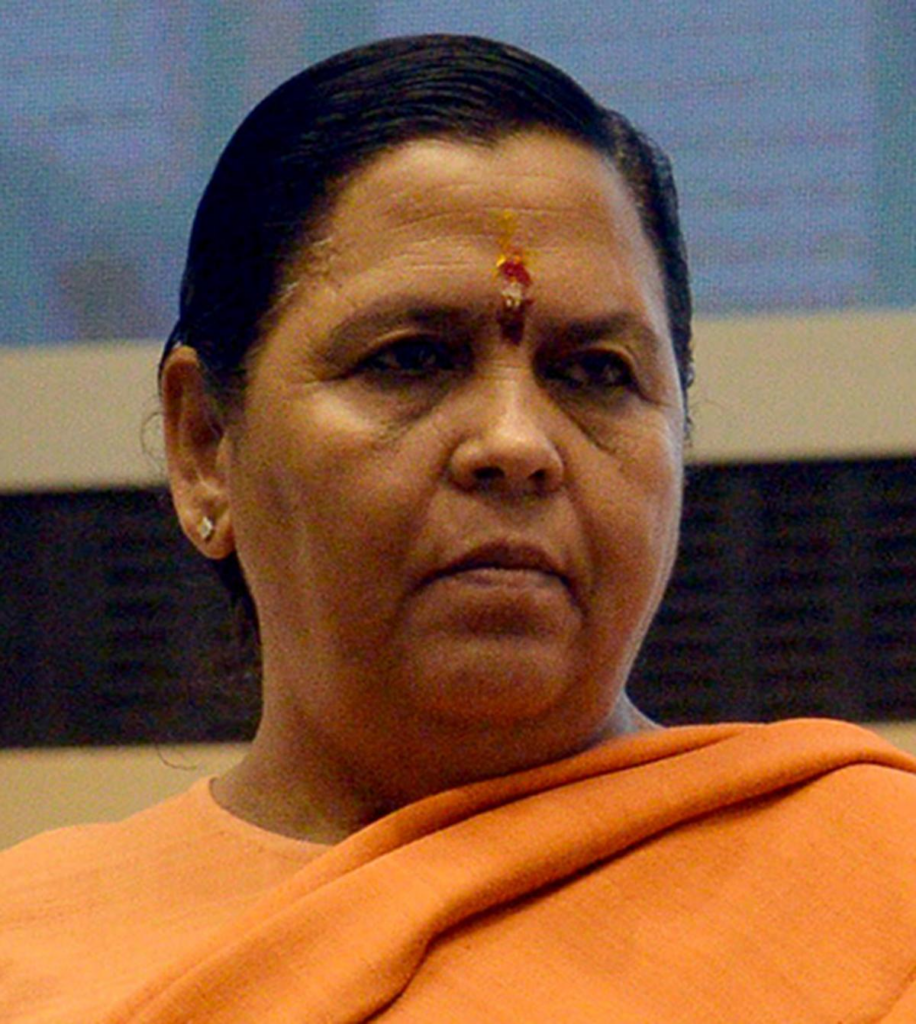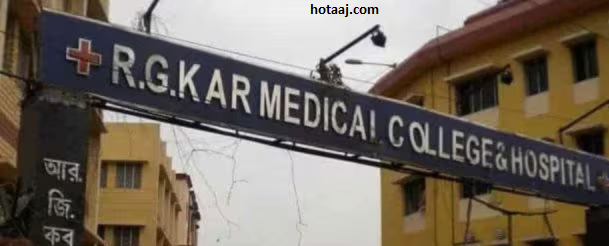“Madhya Pradesh CM Mohan Yadav Considers Liquor Ban in ‘Religious Cities'”

Uma Bharti Welcomes Madhya Pradesh Government’s Proposal for Liquor Ban in Religious Places
On Wednesday, January 22, 2025, senior BJP leader Uma Bharti expressed her support for the Madhya Pradesh government’s proposal to ban the sale and consumption of liquor in religious places. Bharti welcomed the initiative, calling it a significant step towards the broader goal of implementing prohibition across the state.
The proposal, which has garnered attention from both supporters and critics, aligns with Bharti’s long-standing stance on alcohol prohibition. She emphasized that such measures not only promote religious sanctity but also contribute to the well-being of society, aligning with the values of a morally and spiritually conscious community.
Bharti highlighted that this move could serve as a precursor to more comprehensive steps towards prohibition in the state, which she has been advocating for years. By starting with religious cities, she believes the government is laying a foundation for a larger, more impactful ban on liquor that could span across all regions of Madhya Pradesh.
As the debate continues, Bharti’s endorsement signals growing political support for the state’s commitment to reducing alcohol-related issues and promoting a healthier, more disciplined environment. The move is expected to initiate discussions on similar measures in other regions of India.
Madhya Pradesh CM Mohan Yadav Proposes Liquor Ban in Religious Cities to Preserve Sanctity
Last week, Chief Minister Mohan Yadav announced that the Madhya Pradesh government is considering a ban on the sale and consumption of liquor in “religious cities” across the state. The proposed measure aims to preserve the sanctity of these sacred places and ensure that they remain centers of spirituality and reverence.
Yadav’s statement reflects the government’s commitment to maintaining the cultural and religious integrity of important religious cities in Madhya Pradesh. The initiative has sparked discussions about the potential impact of such a ban on local businesses and the broader public, but the government views it as a necessary step to safeguard the sanctity of these revered locations.
Uma Bharti Calls for Full Liquor Ban in BJP-ruled Madhya Pradesh
Uma Bharti, a senior BJP leader and former Chief Minister of Madhya Pradesh, has been advocating for a complete ban on liquor in the state for several years. Her call for prohibition has gained renewed attention following the government’s proposal to ban the sale and consumption of liquor in religious cities. Bharti, a staunch supporter of prohibition, sees this move as a crucial first step toward her broader vision of a total liquor ban across Madhya Pradesh.
Throughout her political career, Bharti has consistently pushed for policies that promote health, morality, and the welfare of citizens. She believes that a complete ban on alcohol would contribute to the state’s social and cultural well-being, particularly in terms of reducing alcohol-related harm and maintaining the sanctity of religious and spiritual spaces.
Uma Bharti Congratulates CM Mohan Yadav for Liquor Ban in Religious Cities, Calls it a Step Towards Prohibition
Former Chief Minister and senior BJP leader Uma Bharti congratulated Madhya Pradesh Chief Minister Mohan Yadav for his government’s decision to implement a liquor ban in religious cities. In a post on ‘X’, she described the move as “an unprecedented decision” and praised the liquor ban policy announced two years ago as “very public-friendly and pragmatic.”
She emphasized that the state was moving closer to her long-standing goal of complete alcohol prohibition. “This is another step towards complete prohibition,” Bharti added, reaffirming her commitment to eradicating liquor from the state for the well-being of its people.
In response to her praise, Chief Minister Yadav stated that banning alcohol consumption in religious cities was one of the key priorities of his government. “It will not only respect the faith of devotees but give a ‘positive direction’ to society,” he remarked, highlighting the government’s commitment to maintaining the sanctity of these important locations.
This proposal aligns with Bharti’s efforts to curb alcohol consumption in the state. In 2022, she staged a unique protest in Orchha town, tying two cows in front of a liquor shop to encourage people to drink milk instead of alcohol. Later, in 2023, Bharti camped at a temple in Bhopal for two days, urging the state government to tighten its excise policy.
Both leaders see this policy as a step forward in promoting healthier, more spiritually inclined communities while advancing the vision of a state free from the harmful effects of alcohol.
Courtesy: The Quint
References
- ^ “MP: State Song to be Sung Along with National Anthem”. Outlook. 12 October 2010. Archived from the original on 21 March 2020. Retrieved 21 March 2020.
- ^ Kohli, M. S. (2002). Mountains of India: Tourism, Adventure and Pilgrimage. Indus Publishing. ISBN 978-81-7387-135-1.
- ^ “2011 Census of India” (PDF). Censusindia.gov.in. Archived from the original (PDF) on 17 October 2011. Retrieved 14 September 2012.
- ^ Jump up to:a b “Report of the Commissioner for linguistic minorities: 47th report (July 2008 to June 2010)” (PDF). Commissioner for Linguistic Minorities, Ministry of Minority Affairs, Government of India. pp. 122–126. Archived from the original (PDF) on 13 May 2012. Retrieved 16 February 2012.
- ^ Records, Official. “Economic Survey of Madhya Pradesh 2021–22” (PDF). Directorate of Economics and Statistics, Madhya Pradesh. Department of Planning, Economics & Statistics, Madhya Pradesh. Retrieved 27 March 2022.
- ^ Jump up to:a b “MOSPI State Domestic Product, Ministry of Statistics and Programme Implementation, Government of India”. 15 March 2021. Archived from the original on 15 April 2021. Retrieved 28 March 2021.
- ^ “Sub-national HDI – Area Database”.
- ^ “Sex ratio of State and Union Territories of India as per National Health survey (2019–2021)”. Ministry of Health and Family Welfare, India. Archived from the original on 8 January 2023. Retrieved 8 January 2023.
- ^ “Madhya Pradesh”. Merriam-Webster.com Dictionary. Merriam-Webster.
- ^ “Indian State of Forest Department Report 2011 – Madhya Pradesh” (PDF). Forest Survey of India. Archived (PDF) from the original on 5 February 2020. Retrieved 30 October 2019.
- ^ “Human Development Index Across Indian States: Is the Glass Still Half Empty?” (PDF). Archived (PDF) from the original on 9 June 2021. Retrieved 9 June 2021.
- ^ “India State of Forest Report 2019” (PDF). Archived (PDF) from the original on 17 March 2022. Retrieved 17 July 2022.
- ^ “Action Plan, States/UTs, 2024-25” (PDF). Ministry of Rural Development, Government of India. Retrieved 26 December 2024.
- ^ “Madhya Pradesh topped the National Tourism Awards 2010–11”. jagranjosh.com. 1 January 2012. Archived from the original on 19 June 2012. Retrieved 14 September 2012.
- ^ “Madhya Pradesh topples Bihar, new No 1 in economic growth”. Economic Times. 30 March 2013. Archived from the original on 2 April 2013. Retrieved 30 March 2013.
- ^ “Madhya Pradesh Presentation and Economy Growth Report | IBEF”. ibef.org. Archived from the original on 28 February 2017. Retrieved 26 February 2021.
- ^ “The Hathnora Skull Fossil from Madhya Pradesh, India” (PDF). Geological Survey of India. 20 September 2005. Archived from the original (PDF) on 16 September 2012. Retrieved 8 September 2012.
- ^ Kenneth A. R. Kennedy (2000). God-Apes and Fossil Men: Paleoanthropology of South Asia. University of Michigan Press. pp. 206–. ISBN 978-0-472-11013-1. Archived from the original on 7 June 2013. Retrieved 8 September 2012.
- ^ Vinod Chandra Srivastava (2 January 2008). History of Agriculture in India, Up to C. 1200 A.D. Concept Publishing Company. pp. 309–317. ISBN 978-81-8069-521-6. Archived from the original on 6 June 2013. Retrieved 8 September 2012.
- ^ Ancient India by Ramesh Chandra Majumdar: p. 134.
- ^ Verma, Archana (2007). Cultural and Visual Flux at Early Historical Bagh in Central India, Oxford: Archaeopress, ISBN 978-1-4073-0151-8, p. 19.
- ^ A Journey through India’s Past (Great Hindu Kings after Harshavardhana), by Chandra Mauli Mani: p. 13.
- ^ A Brief History of India by Alain Daniélou p. 185.
- ^ History of India by N. Jayapalan pp. 149–151.
- ^ Dwarka Prasad Misha, ed. (1956). The History of freedom movement in Madhya Pradesh. Govt. Print., Madhya Pradesh.
- ^ Sen, Abha. “जबलपुर के हाथ से बस इसलिए निकल गई राजधानी की प्रबल दावेदारी”. Patrika.com. Archived from the original on 15 November 2017. Retrieved 25 July 2017.
- ^ Madhya Pradesh for sight-seeing and shikar. Directorate of Information and Publicity, Madhya Pradesh. 1964. OCLC 8112689.
- ^ “Government of Madhya Pradesh (M.P.)”. Archived from the original on 9 June 2021. Retrieved 9 June 2021.
- ^ State of Forest Report (PDF). Forest Survey of India (Ministry of Environment & Forests). 2011. Archived from the original (PDF) on 12 May 2013. Retrieved 10 September 2012.
- ^ “India planted 66 million trees in 12 hours”. The Independent. 3 July 2017. Archived from the original on 7 February 2019. Retrieved 5 February 2019.
- ^ Wild Life Archived 13 November 2012 at the Wayback Machine. Forest Department, Madhya Pradesh.
- ^ “MP Govt. to set up National Dinosaur Fossil Park in Dhar district”. Ummid.com. Archived from the original on 14 February 2018. Retrieved 5 February 2018.
- ^ “Symbols of Madya Pradesh”. knowindia.gov.in. Archived from the original on 12 November 2013. Retrieved 18 October 2013.
- ^ “Symbols of Madya Pradesh”. Archived from the original on 19 October 2013. Retrieved 18 October 2013.
- ^ Jump up to:a b “State Symbols of MP”. Madhya Pradesh State Biodiversity Board. Archived from the original on 25 July 2016. Retrieved 25 June 2016.
- ^ “Madhya Pradesh” (PDF). ENVIS Centre on Floral Diversity. Archived from the original (PDF) on 24 February 2016. Retrieved 16 February 2016.
- ^ “State Animals, Birds, Trees and Flowers of India”. ENVIS Centre on Forestry. Archived from the original on 8 March 2016. Retrieved 10 January 2017.
- ^ “MPOnline: Contact Government”. Mponline.gov.in. Archived from the original on 2 August 2018. Retrieved 26 August 2018.
- ^ “Urban Agglomerations/Cities having population 1 lakh and above” (PDF). Provisional Population Totals, Census of India 2011. Archived (PDF) from the original on 13 November 2011. Retrieved 13 February 2016.
- ^ “Census Population” (PDF). Census of India. Ministry of Finance India. Archived from the original (PDF) on 19 December 2008. Retrieved 18 December 2008.
- ^ [1][permanent dead link].
- ^ Madhya Pradesh: Economic and Human Development Indicators Archived 16 September 2012 at the Wayback Machine, UNDP (2011).
- ^ “SDG INDIA – Index & Dashboard 2020–21 – Partnerships in the Decade of Action” (PDF). NITI Aayog. Archived from the original (PDF) on 12 June 2021. Retrieved 9 June 2021.
- ^ Jump up to:a b c d “Language – India, States and Union Territories” (PDF). Census of India 2011. Office of the Registrar General. pp. 13–14. Archived (PDF) from the original on 14 November 2018. Retrieved 15 December 2018.
- ^ “51st Report of the Commissioner for Linguistic Minorities in India” (PDF). nclm.nic.in. Ministry of Minority Affairs. 15 July 2015. p. 64. Archived from the original (PDF) on 16 February 2018. Retrieved 15 February 2018.
- ^ Jump up to:a b “Percentage of Hindus, Sikhs in MP declines, of Muslims rises”. Hindustan Times. 1 January 2016. Archived from the original on 29 January 2020. Retrieved 22 February 2020.
- ^ Simon Broughton; Mark Ellingham; Richard Trillo (2000). World Music: Latin and North America, Caribbean, India, Asia and Pacific. Rough Guides. pp. 91–. ISBN 978-1-85828-636-5. Archived from the original on 6 June 2013. Retrieved 13 September 2012.
- ^ “Folk Songs – govt-of-mp-india”. Government of Madhya Pradesh. Archived from the original on 14 August 2017. Retrieved 14 August 2017.
- ^ “Folk Dances – govt-of-mp-india”. Gove














